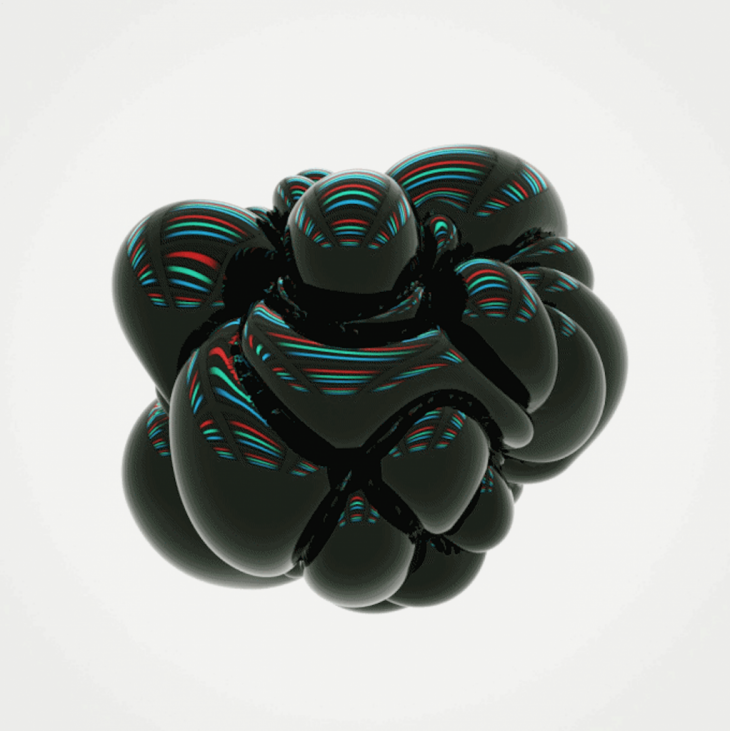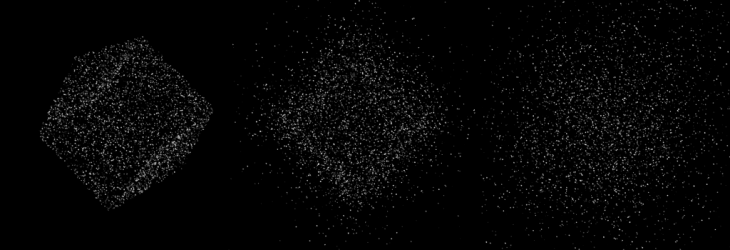This project aims to compose an amorphous form which can evolve from a primitive shape such as cube, sphere, cone etc.
For initial steps, some existing projects or arts have been researched for inspiration.


Left: Dark Matter, The Experimental Motion Graphics by Joe Street, Right: Pow!(?) by Wesley Oostvogels
As it shown on the picture above, explosion of an object requires an central force to push the particles away. What if we preserve the momentum and change it to opposite direction to call particles back to their original form?
ToxicLibs is an independent, open source library collection for computational design tasks. In their Inflate Mesh example they worked on usage of the attraction behavior to inflate a 3D mesh and to deform. However they created their own library and classes to perform physics, attraction behavior and spring system.(VerletPhysics3D, AttractionBehavior3D, WETriangleMesh. Inflate Mesh example by ToxicLibs.
Therefore, with this final project I have tried to test my skills to write a code with similar perspective using conditionals, switches, classes, arraylists, forces.

To Do List for the initial sketch
-Writing instructions as comments
-Importing PeasyCam to create a camera
-Declaration of arraylist
-Setting up an initial environment
-Setting a method to draw
-Adding keyboard functions
-Writing comments to explain sketch
To Do List for Particles Class
-Declaration of the class
-Adding vectors to the field
-Creating constructor
-Setting a method for displaying particles
-Setting a method for inflation
-Setting a method for sending particles to their initial position
-Setting a method for creating initial home positions
-Writing comments to explain the class
Future experimentation:
What if we create switches to obtain different home positions such as spherical instead of a cubic form*?Can we create a continuously adapting amorphous form by randomizing the location of central force? Or maybe location of the new forces can be controlled and manipulated?
*Is it possible to generate a spherical form from icosahedron? Icosahedron Experiment Note: I do not own mathematical part of the code such as location of vertices or math behind generating icosahedron. References : I Like Icosahedra by Ira Greenberg and
https://chrisingradschool.wordpress.com/page/2/
.
M O M E N T U M is a project of IaaC, Institute for Advanced Architecture of Catalonia developed at MAA02 Master in Advanced Architecture in 2016 of the Academic Program by:
Student: Lalin Keyvan
Faculty: Angelos Chronis
